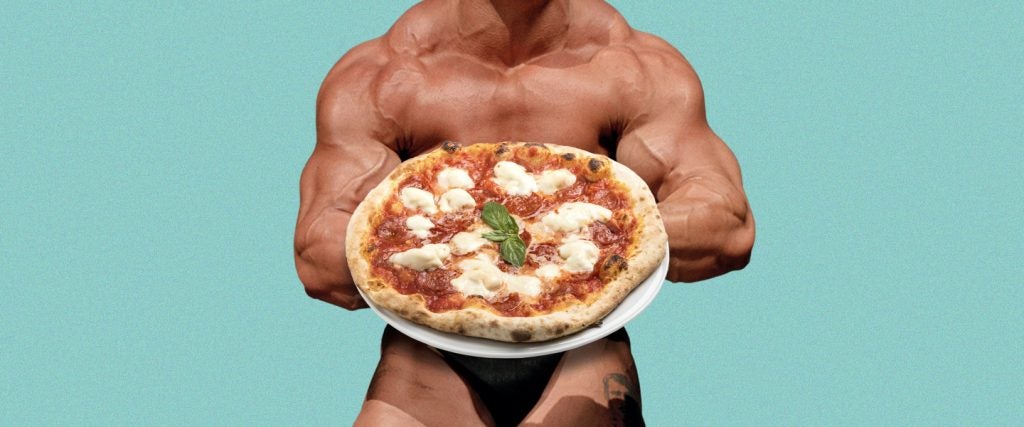A legitimately healthy pizza is among the holiest of the Holy Grails of nutrition. Many people dread the aftereffects of their weekly indulgence in seasoned crust, spicy tomato sauce, melted cheese and meaty toppings, which often extends to additional days of the week if there are any leftovers remaining.
If only you could somehow limit the damage potential possessed by your massive, weekly cheat meal, de-escalating it from a nutritional nuke into a mere slingshot. Well, let’s imagine what would happen if you eliminated all of the fat from the mozzarella cheese that sits atop your pizza. Would it be instantly transformed into a bountiful health bonanza?
I didn’t even know real cheese could be fat-free?
We can debate whether or not a cheese that’s fat-free is even authentic cheese later on. For now, allow me to begin with a nutritional comparison between Kraft’s regular mozzarella cheese and fat-free mozzarella cheese to see how much of a difference it could really make when it comes to your pizza.

Straight out of the gate, it’s obvious that swapping regular mozzarella cheese with fat-free mozzarella cheese will result in an instantaneous 43-percent drop in caloric intake per quarter-cup/one-ounce/28-gram serving.
So the fat-free cheese makes a huge difference!
Don’t go declaring victory too hastily.
To put this in context, there are 142 grams of cheese on an entire medium Domino’s Pizza of the ordinary, hand-tossed variety. This equates to approximately five servings of mozzarella cheese, which means your strategy of switching to fat-free cheese is going to spare you a total of 175 calories across the consumption of an entire pizza. Furthermore, if you bisect your consumption of the pizza over two days, it’s a difference of just under 90 calories per day. Moreover, since an ordinary medium pepperoni pizza from Domino’s is 1,750 calories, your switch to fat-free cheese only reduces the overall calorie count by 10 percent.
See? The dip in the fat of your cheese only means so much when 60 percent of a pizza’s constituent calories are contributed by the crust alone.
Wow! Eliminating the fat content of the cheese doesn’t make much of a caloric difference!
Now that we’ve gotten that out of the way, let’s turn our attention to the practical application of using a fat-free cheese. You should already be raising an arched Dwayne Johnson eyebrow when you hear that something like cheese is fat-free. Your justifiable skepticism is owed to the fact that most cheese production is defined by the filtering of liquid whey out of a milky mixture, leaving behind the curdled casein and fat. At its core, that’s the very essence of what cheese is: casein and fat.
Taking the fat out of cheese and calling it cheese is like eliminating the booze from a booze cruise and calling it fun. Folks have expectations for a certain type of experience, and you’re going to disappoint them.
In practice, fat-free cheese doesn’t fully function like cheese, and this is easily evidenced on the surface of a pizza. Scientists have had to jump through hoops to get fatless cheese to melt half as well as the full-fat variety. Even when you do get it to melt, the texture remains rubbery, and its taste is generally regarded as subpar.
Should I even bother with a fat-free cheese pizza then?
It all depends how crucial that 175-calorie differential (really about 20 calories per slice) truly is to you.
If you want my opinion — which is presumably why you’re here — you should just stick to the real thing. If you’ve gone far enough down the rabbit hole of your pizza craving to order one, just enjoy it. The calorie savings isn’t consequential enough to leave a bad taste in your mouth.

